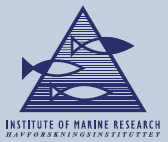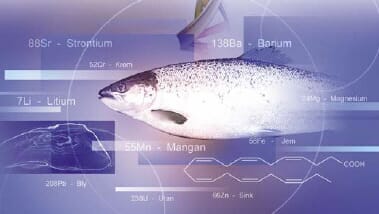
The 'escape debate' has rumbled on for more than 20 years, but now that environmentalists are using the issue as a lever against fish farming, and it's becoming more of a public concern.
The aquaculture industry is working hard to defend its position and bio-technology is helping. With the aid of new DNA finger printing and genetic screening methods, salmon stocks can be studied specifically - as can the changes that may occur as a result of farm escapes.
Such studies that would have been impossible only a few years ago, says Dr Øystein Skaala, research scientist at Norway's Institute of Marine Research (IMR).
DNA techniques enable geneticists to draw up genetic profiles of the individual salmon stocks in a given river, which means profiles can be compared. The DNA is taken from scales (deposited or from live fish) and so profiles can be evaluated across time periods. Old profiles can be compared with those of the salmon currently found living in a river.
The method for tracing escapees developed by the TRACES project will be a useful tool for management of the aquaculture industry.

Genetic evidence
In Norway, large numbers of escaped salmon have found their way into rivers including the Etneelv, Oselv, Vestre Jakobselv Namsen. Questions are now being asked as to whether species living in these rivers are hybrids of both wild and farmed fish.
"Do we still have wild salmon stocks that have not been affected by escaped farmed salmon?" asked Dr Skaala in a recent IMR report.
Using DNA profiling methods could determine if this has occurred and also the extent of hybridisation in 'wild' populations.
In 2004, the Institute of Marine Research (IMR) published the DNA profiles of the five most important farmed salmon genotypes, and a selection of wild salmon stocks. This has been the largest DNA study ever published on Norwegian salmon. These profiles, enabled geneticists to distinguish the five farmed lines to an accuracy of about 97 per cent, while farmed salmon could be distinguished from wild salmon to an accuracy of 96 per cent.
DNA profiles drawn up from the genetic information from old salmon scales suggest that the salmon stock in the Rivers Håelv, Namsen, Etne and Granvin have remained stable. However, genetic changes have been found in salmon in the Rivers Vosso, Opo and Eio - all of these water ways have a high immigration rate of escaped salmon.
Success in practice
During the autumn last year (2006), fishermen in the Romsdalsfjord in western Norway reported an increase in the number of escaped salmon being caught. Although no escapes had been reported in that area, IMR in collaboration with the Directorate of Fisheries, collected DNA samples from all the sea cages in the region (16 sea-cages on seven farms.) DNA was also extracted from 29 of the caught escapees and typed for 15 genetic markers.
The results showed that 20 of the 29 escapees (69 per cent) could be matched to the genotypes being farmed in one specific sea-cage. The results were sufficiently strong to warrant a full investigation.
Further Reading
|
|
- You can view an IMR report on this research by clicking here. |
|
|
- Read more about DNA-based investigations by clicking here. |
|
|
- For a report on the West Loch, Roag incident click here. |
October 2007


